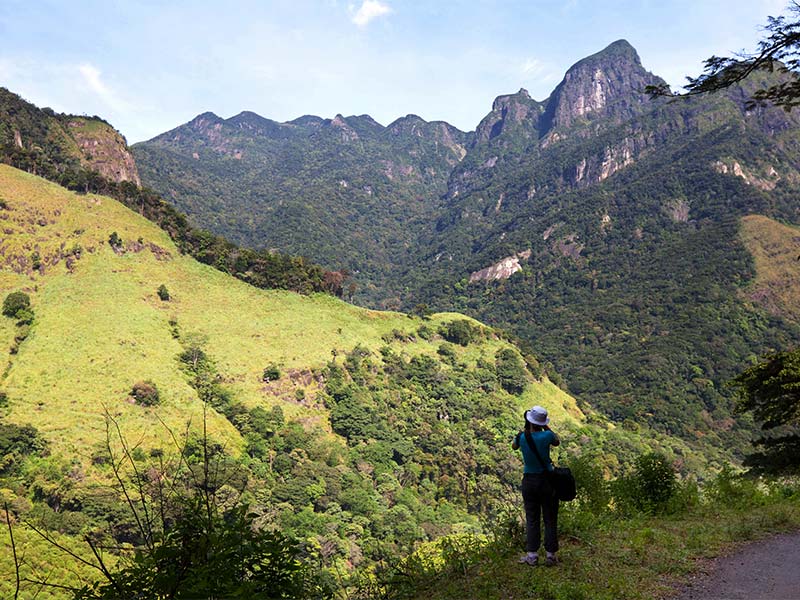Located north-east of Kandy, the Knuckles Conservation Forest lies within the Knuckles mountain range and gets its name from its resemblance to the knuckles of a clenched fist. A World Heritage site and strict natural reserve, it is a bio-diversity hotspot and habitat for numerous species endemic to the region.
Lying at an elevation of between 2100 and 5500 feet, the vegetation at Knuckles Conservation Forest is diverse with pockets of cloud forest, dry evergreen forest, and wet and dry patna grassland. Steep slopes and ravines give rise to numerous streams and small waterfalls creating unique microcosms within small areas. Unpredictable weather adds to its charm, and heavy mists can envelop the slopes within minutes.
A trekker’s paradise, the Knuckles Conservation Forest offers a number of trails to be explored. Winding through dense forest, across little streams, and over open montane grassland, passing tea estates and isolated village communities, the trails provide a view of the unspoiled beauty of the region. Little World’s End, a steep escarpment at the edge of open grassland, and Corbets Gap provide fine viewing points of the mist-clad mountain range and form a part of the trails. On the journey, watch out for the numerous endemic species that call this home. The Purple-faced Leaf Monkey shares the treetops with Spot-winged Thrush, Blue Magpie, and Yellow-fronted Barbet. On the ground, the Leaf-nosed Lizard is found only in the Knuckles. Corrugated Water Frogs prefer the moist banks of the streams and on the grassland, Small-eared Tree Frogs abound.
At the eastern end of the Knuckles Conservation Forest, Lakegalla, or Rock of Lanka, is a conically shaped peak which according to the Ramayana legend, was from where King Ravana ruled his Kingdom of Lankapura. It is also believed that he used the 3,000-foot peak, to launch his ancient glider, the Dhadumonara, which he used to capture Sita from India.
Written by Jonathan Roelofsz for Travel Lanka Compass



0 Comment